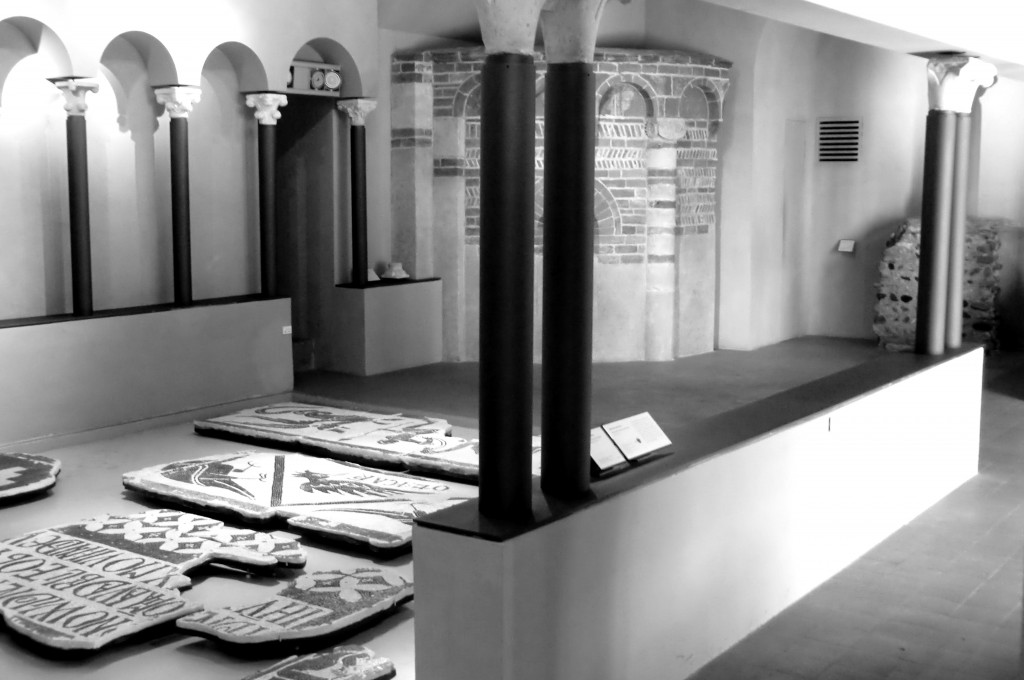PALAZZO MADAMA – MUSEO CIVICO D’ARTE ANTICA
Emanuela Lavezzo
Architetto
Cristina Volpi
Architetto
Paola Grifoni
Architetto
CONSERVATIVO DELL’ANTICA CAPPELLA GENTILIZIA DEI CONTI GAZZELLIDA ROSSANA
(1998 - 2006)
Piazza Castello
progettista Emanuela Lavezzo, Cristina Volpi, Paola Grifoni, Carlo Viano, Diego Giachello, Massimo Venegoni, Leonardo Mastropietro
Dal 1934 Palazzo Madama ospita il Museo civico di Arte antica, tuttavia per molti decenni la possibilità di ammirare queste collezioni è stata preclusa nonostante siano stati predisposti numerosi progetti di restauro e riallestimento. In occasione delle Olimpiadi invernali del 2006, il museo viene riaperto al pubblico mostrando una veste che alla modernità delle scelte espositive e funzionali accosta il rispetto per la storia dell’istituzione museale costituita settanta anni prima.
Il nuovo allestimento si lega alle diverse stratificazioni architettoniche che costituiscono l’unicità dell’edificio, proponendo differenti temi espositivi che coniugano le metodologie pensate nel secolo scorso con la tecnologia più recente. I materiali della modernità, acciaio e vetro, dialogano con la muratura antica con risultati di grande effetto come testimonia la scala inserita nella torre panoramica o il pavimento trasparente nella corte d’accesso.
In un secondo momento si è provveduto a recuperare lo spazio dell’antico fossato, trasformandolo in un giardino tematico che sulla base di ricerche archivistiche ripropone l’aspetto delle aree verdi medievali con le distinzioni in orto, frutteto o bosco e il giardino del Principe.
CONSERVATIVO DELL’ANTICA CAPPELLA GENTILIZIA DEI CONTI GAZZELLIDA ROSSANA
(1998 - 2006)
Piazza Castello
progettista Emanuela Lavezzo, Cristina Volpi, Paola Grifoni, Carlo Viano, Diego Giachello, Massimo Venegoni, Leonardo Mastropietro
Since 1934, “Palazzo Madama” houses the Municipal Museum of Ancient Art. These collections have not been visited for many decades although many projects of restoration and rearrangement were prepared. On the occasion of the Winter Olympics in 2006, the museum was reopened to the public showing modern and functional choices for exhibitions and the respect for its history created seventy years before well combined.
The new layout of the museum is linked to the different architectural stratifications which enhance the uniqueness of the building, offering different exhibition themes combining last Century methodologies with the latest technology. Steel and glass modern materials contrast with the ancient masonry with impressive results as evidenced by both the stairs inserted in the observation tower, and the glass floor in the court entrance.
Later it was decided to recover the area of the old moat, turning it into a theme-based garden. According to archival research, it appears as a Medieval green area distinguishing the vegetable garden, the orchard or wood and the Prince’s garden.

